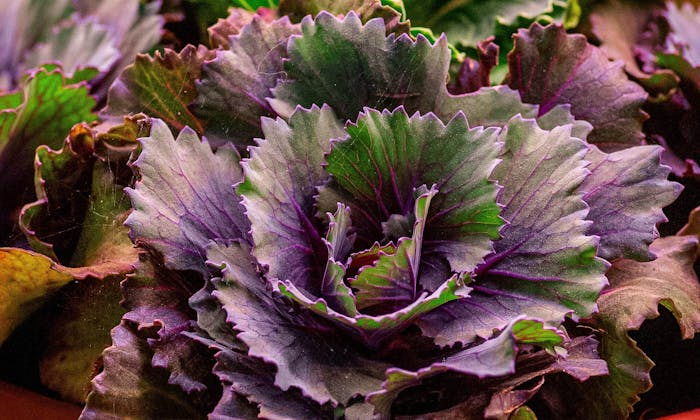It's time to plan your fall garden. Here is what you should do to prepare, and what vegetables you can choose from.
As gardeners we are very lucky to be living in Southern California where we get two full growing seasons every year. Since our winters are so mild, the cool-season crops we grow are able to survive much longer and provide us with so much bounty.
Preparation for the cool season starts early. It's August as I'm writing this and I'm thinking about which plants I should be growing in containers for when the season changes. I'm also flipping through the seed catalogs salivating over what I will be able to grow soon.
Here is a breakdown of the plants that suddenly become options to grow as the weather finally cools down for the year.
Cabbage Family (Brassica)
Kale
You can grow kale all year, but the cooler months are the best time to plant it in order to make sure the plant grows up healthy. You can get the best results by replacing your kale plants every year. Start new plants in October and compost the old ones when these are ready.
Broccoli and Cauliflower
I tried to sneak in a few broccoli's last spring, but it got too hot too fast and they didn't flower correctly. Brocolli grown in the fall have the best chance. The same is true for Cauliflower.
Mustard Greens
Mustard greens are best grown with successive planting, every 2-3 weeks. Start sowing them in September.
Root Vegetables
I like to grow carrots, beets and radishes between other vegetables. They are great for filling in spaces. Some people alternate carrots and radishes because the carrots are slower growing. As they start out, they need less space so the fast growing radishes can take advantage of the gaps. By the time the carrots need more space, you've harvested the radishes and the carrots have the room to grow.
Carrots
Carrots do best when night temperature is about 55°F and day temperature is about 75°F. Aim to sow them around late Fall, near the end of October is best.
Beets
Start sowing beets in early September. Depending on how many you will eat, plant a few every couple of weeks.
Radishes
Radishes grown during hot months become hard and mealy very fast. But they are really fun to grow during the cold months, and they grow fast. Start succession planting early, once the weather just starts to cool in September. If you start too early you might have to compost a few.
Leafy Vegetables
Lettuces also thrive under cold weather planting. Fall is the time to sow romaine, iceberg, and any other lettuce that catches your eye. Some lettuces are grown for warmer climates, if you can find those varieties you can start growing your lettuce in early September. Spinach also does very well at this time of year.
The nice thing about growing lettuce at home is you don't harvest the whole plant. Just take what you need as you need it and it will grow back.
A few more
Snap Peas
You can never grow too many snap peas. They are the best thing to just snatch of the vine and snack on.
Celery
Celery is a biennial, but it's grown as an annual. It takes 16 weeks of cool weather to mature, so start it as soon as the weather turns.
Herbs
Some herbs prefer the cooler months of the year. It is also a great time to start establishing any perennial herbs you want to add to your garden.
Chives
Chives are a cool-season perennial. They go dormant during the hotter months of the year and spring to life as it cools during fall and early spring. If growing from seed, start around the beginning of November.
Lavender
Although you can grow lavender from seed, it is much easier to grow it as a transplant. Lavender can be a challenging plant in the first year, but once established it becomes relatively carefree. It is very drought tolerant and disease and pest resistant. Give it a good start by transplanting in the fall when the weather is moderate, or if you miss fall, during the transition into spring.
Rosemary
Rosemary is easy, evergreen, slow growing. Fall is a good time to plant it, as is spring. It blooms in winter, but don't expect blooms in the first year if you plant it in fall.
Fruit Trees and Perennials
Fall through mild-winter is the best time to plant your fruit trees and shrubs, or any tree really. Remember, the biggest threat to your trees in California is not usually frost but heat.
If you plant in Fall, you get three season for the tree to grow it's root system, recover from any transplant shock and adjust to its new location before the big summer battle starts.
Some suggestions for fruit trees to plant this fall:
- Anything citrus: lemons, oranges, grapefruit, kumquats
- Mulberries
- Figs
- Stone fruit: peaches, plums, cherries
- Pomes: Apples, pears, quince
Conclusion
Fall is just about as exciting for planting as spring in Southern California. You get to rip out those struggling plants that make the garden look so sad, and get to revitalize it with a whole new set of plants. What will you be growing this season?

